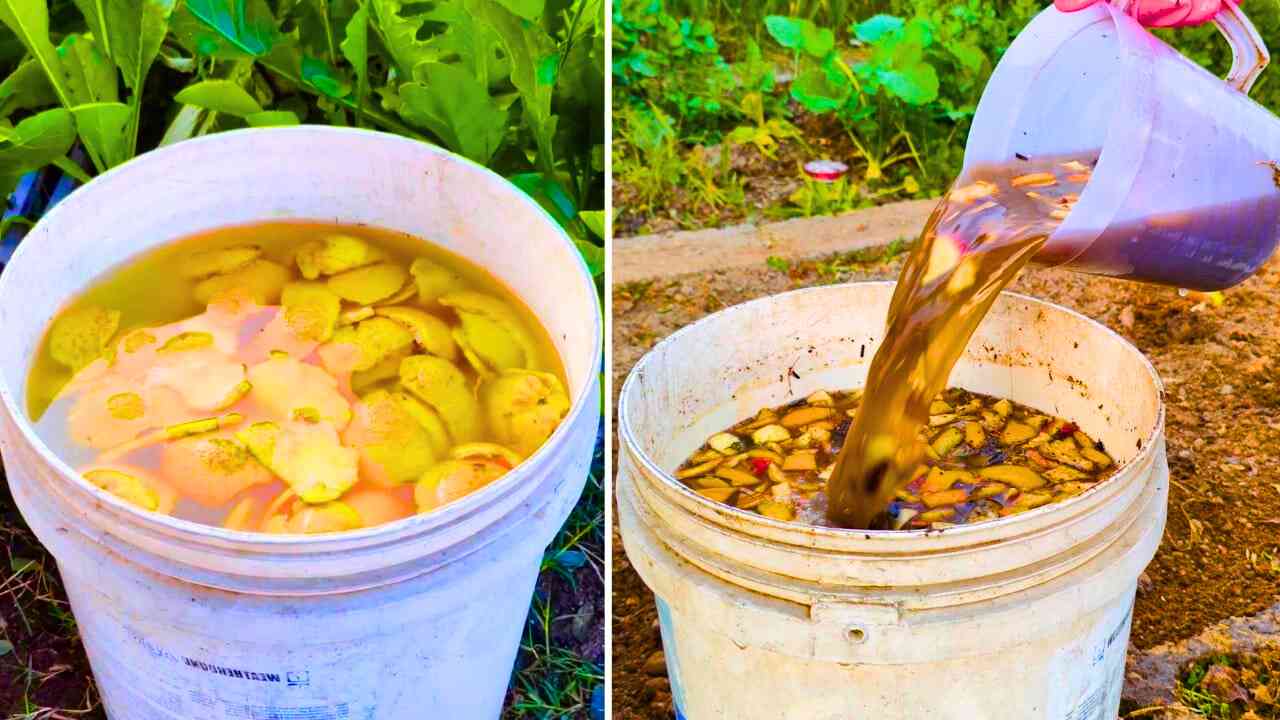You are being helpful to the environment by turning your kitchen waste into something useful for your yard. It can also be a very satisfying and inexpensive way to improve plant health. In the yard, orange peel is one of the most useful and adaptable food scraps. Orange peels can be turned into a natural, pest-repellent, and nutrient-rich soil with just a little work. This process will help your plants grow and reduce waste in your home. These instructions will show you how to use your extra peels to help your garden, which will save you money and be better for the environment.
Collecting and Preparing the Orange Peels
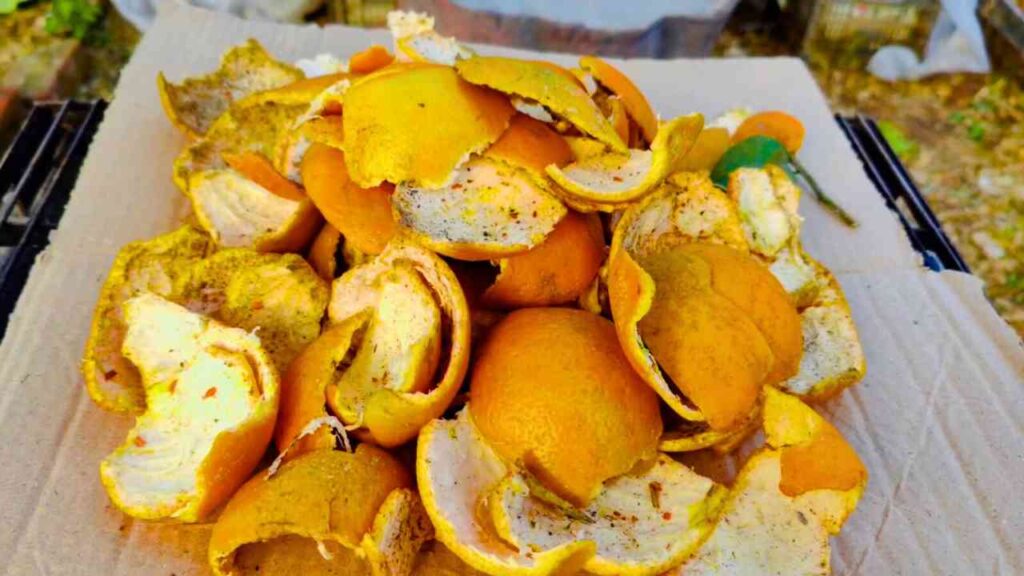
The first thing you need to do to make your own fertilizer is to start saving your orange peels. You will need the peels from 10 to 12 oranges to make a batch of manure that is full of nutrients. It will be easy to get enough peels over time if you eat oranges often or have a family that likes fresh fruit. Not only are orange peels a common trash item in the kitchen, but they are also full of nutrients that plants need to grow.
There is a lot of nitrogen, phosphorus, and potassium in orange leaves. These are three nutrients that plants need to grow strong and healthy. Nitrogen helps plants grow leaves, phosphorus helps roots grow well and flowers bloom, and potassium helps plants stay healthy and fight off disease. You can give your yard a natural boost with these peels instead of spending a lot of money on chemical fertilizers.
After getting your peels together, it’s time to get them ready for the next step. To speed up the soaking process and make it easier for the nutrients to mix with the water, just cut them up into smaller pieces.
Soaking Orange Peels
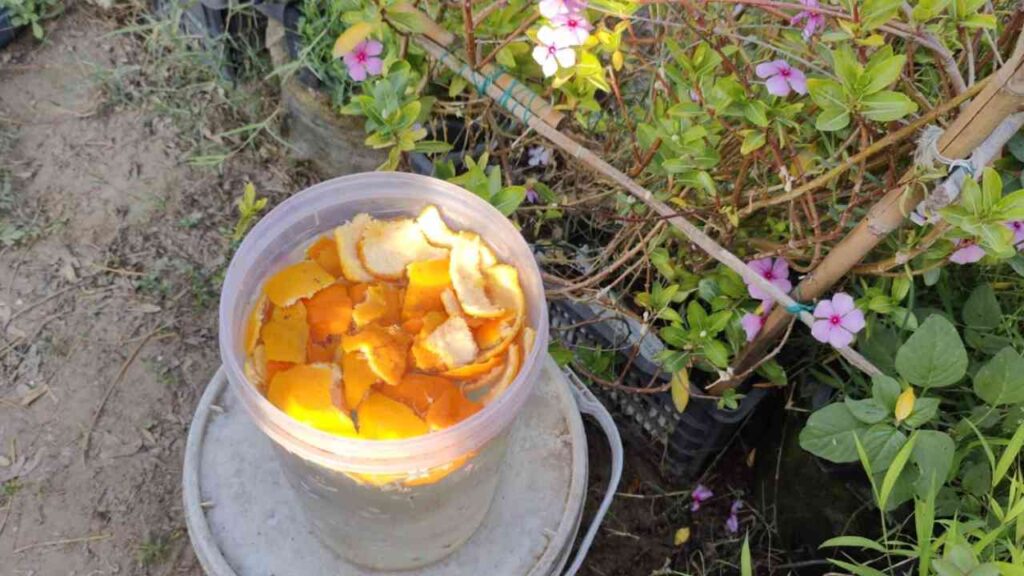
Putting orange peels in water for a while is the next step in making them a powerful fertilizer. You will need about 10 liters of water to do this. It would be best to use rainwater for this method if you can. Rainwater is better for plants than tap water, which has chemicals like chlorine and fluoride. If rainwater is unavailable, tap water can also be used for plants.
Make sure that all of the orange peel pieces are soaked when you add them to the water. You can put the mixture in a big container, like a bucket, and cover it only lightly so that air can flow through but dirt stays out. For about three days, leave the peels in the water. This approach will let the water soak up all the nutrients, oils, and beneficial chemicals from the peels. During these three days, the citrus chemicals will mix with the water, making a liquid that is full of nutrients that you can use to feed your plants. The process is straightforward and doesn’t take much work from you, but the results are great.
Here, you turn trash into something that helps your plants grow. The solution will be more concentrated if you steep the orange peels for a longer time. You can change the steeping time to suit your plants’ needs.
Gardening With Orange Peel Fertilizer
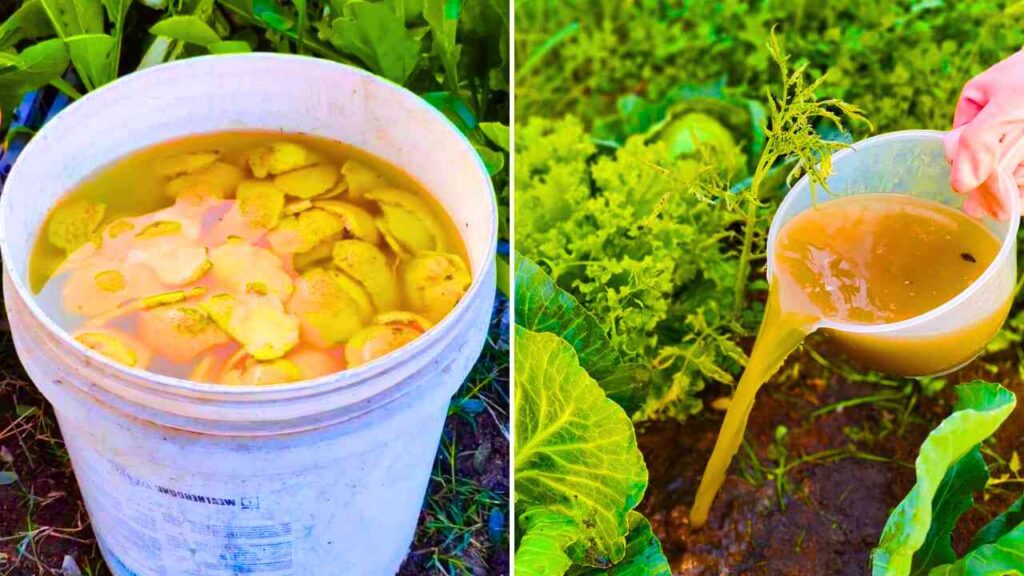
The orange peel fertilizer you made at home is ready to be used after the steeping process is over. You can use the orange peel water in your yard in two main ways: either pour it around your plants or spray it on their leaves.
In the first way, the nutrient-rich liquid is poured right under the plants, around their roots. This lets the natural chemicals and important nutrients Nutrients, such as potassium, enter the plants and help them grow. The nutrients will be pushed deep into the earth, where they will help the roots of the plants and give them the fuel they need to grow big and healthy. That’s because the orange peel water is good for plants. Over time, you should see their roots get stronger, their leaves turn greener, and they produce more flowers or fruits. It’s like giving your plants a drink that is both refreshing and full of vitamins. The vitamins will help them grow.
After juicing, compost the peels. They will keep adding organic matter to the earth as they break down, which will make your garden even more fertile overall.
Using Orange Peel Water to Spray the Leaves
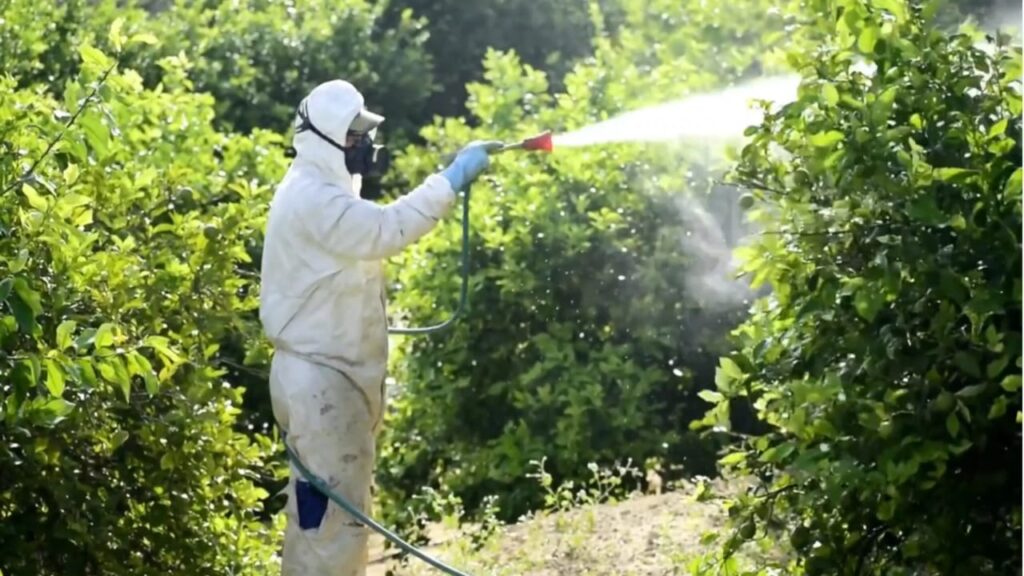
If you want to use orange peel water in a second way, you can spray it on your leaves. Strain the liquid to remove any peel bits, then put it in a spray bottle. This procedure lets you spray the nutrient-rich fluid on the leaves of your plants. Spraying nutrients directly on the leaves of a plant works well and helps the leaves receive the nutrients more quickly.
In addition to giving you nutrients, orange peel water is a beneficial natural way to keep pests away. Many plant pests, like aphids, whiteflies, and spider mites, don’t like the citrus compounds that are found in orange peels. You’re not only feeding your plants by spraying them with orange peel water, but you’re also protecting them from these nasty bugs. Citrus trees naturally give off a nice scent that will also fill your yard, making it a pleasant place to work while keeping pests away from your plants.
Other Ways to Use Orange Peels in the Garden
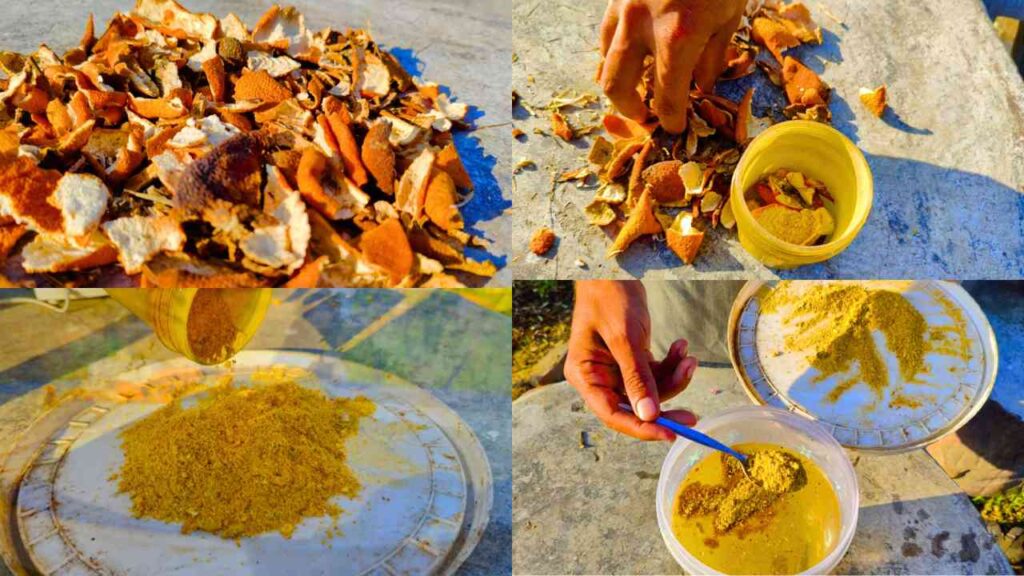
The peels of oranges can be used in many different ways around the yard. In addition to making fertilizer and bug sprays, dry orange peels can be used to make a natural bug spray. To keep pests away, dry the leaves and put them around the plants. The strong smell of citrus is a natural repellent that will help keep your garden safe from pests.
Dried and ground orange peels can be used as mulch or put right into the soil if you’d rather add organic matter. The peels will help make the earth better, make it more fertile, and help plants grow better. Long after the peels disappear, your plants will benefit from the nutrients the peels release into the soil.
Conclusion
It’s easy and good for the environment to turn kitchen waste like orange peels into something helpful for your garden. The process helps both your plants and the environment. You can save money, cut down on waste, and make sure your garden grows well with fewer chemicals if you make your own natural fertilizer and bug repellent. Using orange peels in your yard has many benefits, such as improving plant health and keeping pests away. The process is easy, works well, and is fun. Adding orange peels to your gardening routine will definitely make your garden last longer and look better, no matter how experienced you are or how new you are to gardening.

